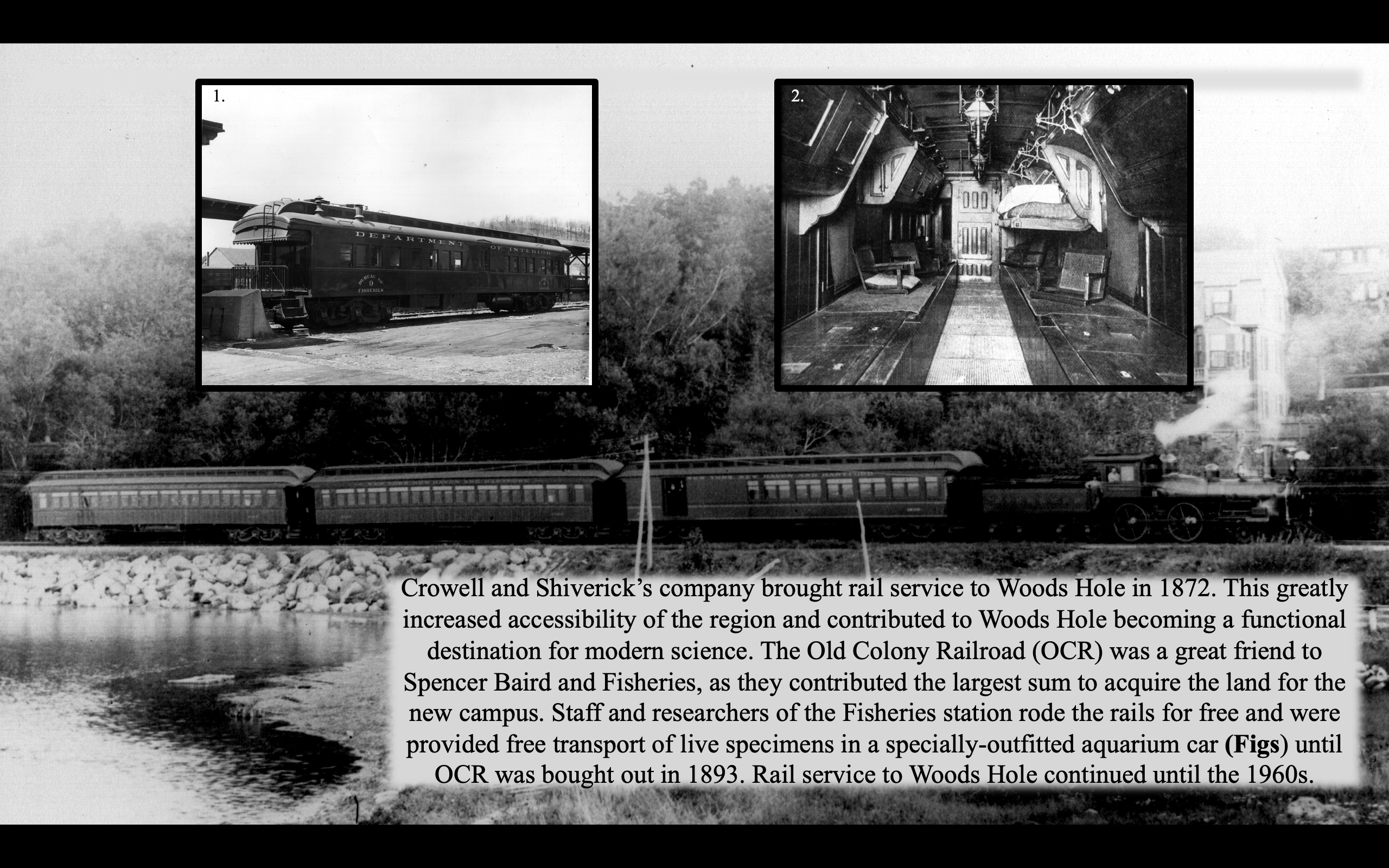150 Years of Woods Hole Science
11

Fig 1: Railroad car used for the transport of fish eggs and fry on railroad tracks at Woods Hole. Credit: NOAA Fisheries. Exterior of railcar for transportation of fish eggs, fry, and other live marine specimens.
Fig 2: Railroad train car designed for the transport of fish eggs and fry, interior view. Credit: NOAA Fisheries. Interior of railcar for transportation of fish eggs, fry, and other live marine specimens.
Background image: Woods Hole fast train of the Old Colony Railroad, "Flying Dude," 1896. Credit: NOAA Fisheries.
All images from NOAA archives gallery at https://apps-nefsc.fisheries.noaa.gov/rcb/photogallery/assorted.html
References:
Galtsoff, P.S., 1962. The story of the bureau of commercial fisheries, Biological Laboratory, Woods Hole, Massachusetts (Vol. 145). US Department of the Interior, Bureau of Commercial Fisheries.
p. 6:
“Through efforts of the business manager of the Guano Company, the Old Colony Railroad was persuaded to extend its branch from Monument Beach to Woods Hole. The establishment of well-organized and reliable transportation to Boston was an important factor in the future life of the community.”
“On July 18, 1872, the Old Colony Railroad opened its services to Woods Hole. This improvement was a great benefit to the village and of considerable convenience to the Fish Commission…the Old Colony Railroad was leased in 1893 (to the New York, New Haven, and Hartford Railroad)…At the request of Baird the Old Colony issued special tickets which facilitated transportation of the officers and employees of the Fish Commission to and from Woods Hole. An agreement with various other railroad companies authorized the Fish Commission to transport live fish in the baggage cars of passenger trains without extra charge and allowed the Commission messengers to have free access to them while en route.”
pp. 28-29:
“He realized great difficulties in obtaining Congressional appropriation for the purchase of lad for the laboratory and entered into negotiations with the owners of most desirable tracts of land on the shore of Great Harbor in Woods Hole. At the same time he persuaded a number of influential and wealthy persons to give financial support to his project…The annual report…lists the following parties who contributed the money: Old Colony Railroad Company $2,500 John M. Forbes $1,000 (Etc.).”